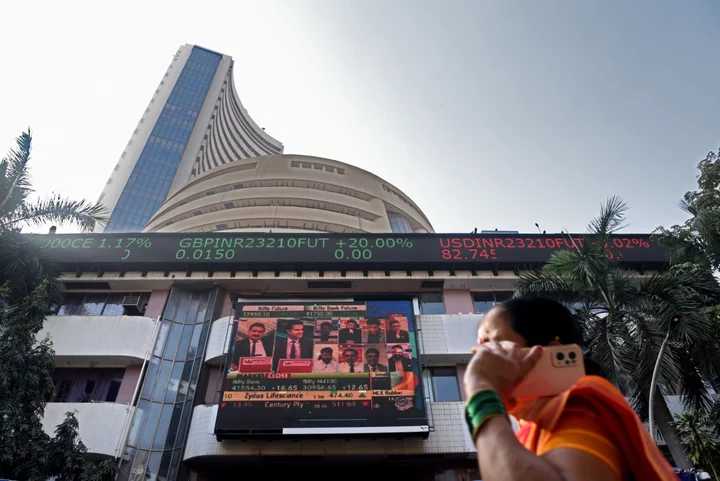India’s new rules for environmental, social and governance investments and ratings are likely to attract more investors to the nation’s $1.4 billion market and serve as a model for other countries, according to JPMorgan Chase & Co.
India is among the first in the world to regulate ESG rating providers and the country’s minimum requirement for funds to invest — according to their stated strategy — is “a high bar,” said Hannah Lee, JPMorgan’s head of ESG equity research for the Asia-Pacific region. “Where India stands out in terms of being trailblazing is probably its level of ambition and some of the thresholds that it has,” she said in an interview.
India rolled out several measures over the past two years to regulate its market for green and other assets, most recently allowing domestic fund managers to launch plans under six types of ESG strategies. The rules are part of a broad campaign to increase oversight. Earlier this year, the country was rocked by a short-seller report alleging poor governance and systemic mismanagement at ports-to-power conglomerate Adani Group.
According to the new rules, at least 80% of total fund assets must be invested in equity and equity-related instruments that align with the stated strategy. It makes India’s the highest benchmark in Asia, Lee said. In Singapore and the Philippines, the threshold is about 67%.
The European Securities and Markets Authority has proposed an 80% threshold for all funds with names that use ESG-linked labels. Europe’s strictest designation for sustainable funds, Article 9 or “dark green,” requires 100% alignment, a high bar that led some asset managers to reclassify their funds under the more lightly restricted category Article 8, or “light green.”
Lee doesn’t see that as a problem for India. “Regulation of ESG funds has helped develop ESG investing in many markets,” she said, and noted that in Europe, “flows to Article 9 products remained positive all through 2022.”
India’s available ESG categories include “transition and transition-related” funds, which “aim to invest in companies and issuers that support/facilitate environmental transition and just transition.” That could attract more capital, Lee said, because it allows funds to hold assets that might typically be excluded from ESG funds — for example, energy companies that still generate a lot of revenue from coal but are increasing investments in renewables.
As for ESG scores and ratings agencies, Indian funds are now required to disclose the ESG scores of invested securities, after the country moved to define qualifications for ESG rating providers in July. Regulators globally have bemoaned the quality of ratings and lack of consistency of standards in a global market that is set to reach $53 trillion in size over the next two years.
Read more: Pension Funds Want ESG Ratings ‘Oligopoly’ Broken by EU
India has been building out its framework for ESG investments, requiring companies to submit detailed emissions data and sustainability reports that need to be audited, as regulations step up across Asia. The expanding regulatory framework in the region is partly helping Asia outpace Europe and the US in terms of interest from ESG investors this year, according to Sanford C. Bernstein strategist Zhihan Ma.
Asia’s ESG equity funds saw inflows of about $6.6 billion this year through June while North American and Western European peers witnessed net redemptions, she wrote in a note last month, citing EPFR data. Analysis by Goldman Sachs Group Inc. shows that Article 8 and 9 equity funds in Europe manage over $2 trillion. In Asia, ESG funds only account for about 2% of mutual fund assets, Lee said.
--With assistance from Tasneem Hanfi Brögger.

